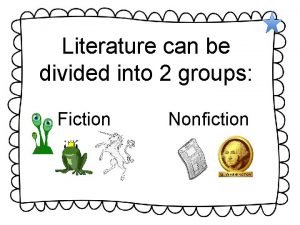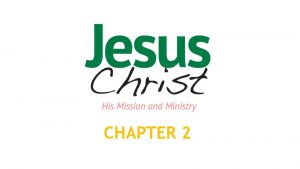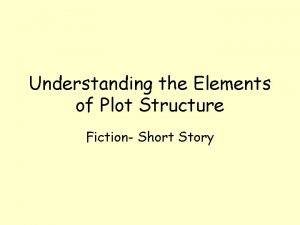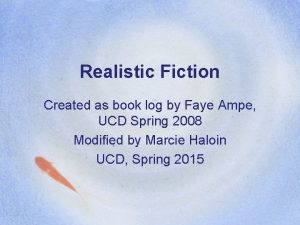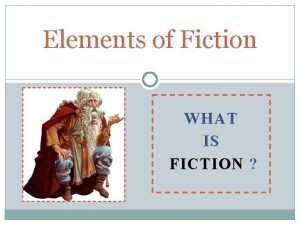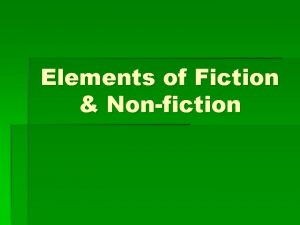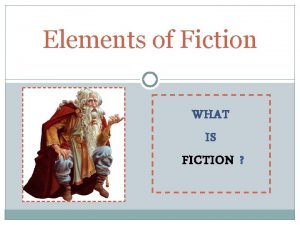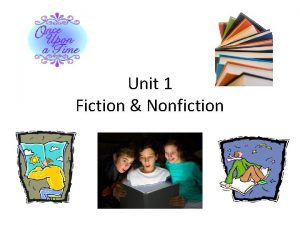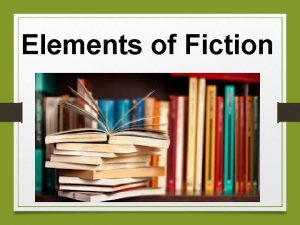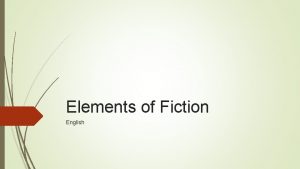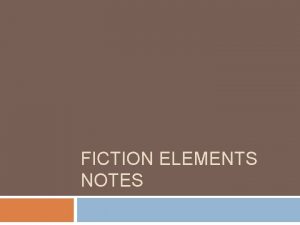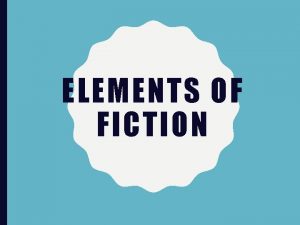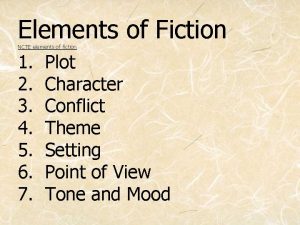ELEMENTS OF FICTION REVIEW NOTE Fiction NOT TRUE
















- Slides: 16

ELEMENTS OF FICTION REVIEW

NOTE…. • Fiction = NOT TRUE (Created) Non Fiction = TRUE

There Are 6 Elements of Fiction: • Plot • Character • Conflict • Setting • Point-Of-View • Theme

PLOT • Plot is the story itself. It contains a beginning, middle, and end. Plot is often characterized by the following diagram: Ac ing Ris n o cti g. A Exposition llin Fa tio n Climax Resolution

You Can Have FUN With Plot Lines!

• Exposition: Introduction—Used to introduce characters, setting, or any needed background information • Rising Action: Relevant incidents that create suspense, interest, or tension—often includes character(s)’ flaws and decisions leading up to climax

• Climax: The “crisis”—the decisive moment or tuning point in the story • Falling Action: The beginning of the resolution—the direct effects of the climax • Resolution: The solution or the completion of the story is revealed— loose ends resolved

CHARACTER • People, ANIMALS, or Forces that are represented in a piece of literature. Characters are either …

• STATIC: stay the same throughout the story… OR • DYNAMIC: undergo a CHANGE in personality or attitude. *Usually Demonstrate GROWTH

CONFLICT • PROBLEM between two OPPOSING forces. • Conflicts can be either INTERNAL (Takes Place Within a Character) OR • EXTERNAL (Takes Place OUTSIDE the Character)

4 MAIN CONFLICTS: • Character Vs. CHARACTER • Character Vs. NATURE • Character Vs. SELF • Character Vs. SOCIETY

SETTING • Setting refers to the TIME (WHEN) and PLACE (WHERE) in a story. Setting also includes props, weather, and the time of day. Setting Is also closely related to ATMOSPHERE or MOOD.

POINT OF VIEW • Relates to the position of the NARRATOR. The narrator is who is telling the story—this does not mean the AUTHOR. The author can choose to have a narrator tell the story in 4 different points of view.

• First Person: “I” telling the story. This NARRATOR is usually a character within the story.

• Third Person: The narrator does not participate in the action of the story as one of the characters. This is an “OUTSIDE” voice. The author uses pronouns such as HE, SHE, IT, or THEY.

• Omniscient: Form of third person where the narrator knows everything about each character. The term can be defined as ALL KNOWING. • Dramatic: As in PLAYS, the Elements of Fiction are SHOWN to the audience.
 Sadlier level d unit 1 synonyms
Sadlier level d unit 1 synonyms Element of fiction and non fiction
Element of fiction and non fiction Difference between note making and note taking
Difference between note making and note taking Word signal
Word signal Difference between note making and note taking
Difference between note making and note taking Goods received note
Goods received note What is debit note and credit note
What is debit note and credit note What is debit note
What is debit note Relevance of note making
Relevance of note making Simple discount formula
Simple discount formula It is a genre of speculative fiction
It is a genre of speculative fiction Contemporary realism literature
Contemporary realism literature Fiction and non fiction examples
Fiction and non fiction examples True or false true or false
True or false true or false Chapter 2 jesus christ true god and true man
Chapter 2 jesus christ true god and true man Elements of fiction plot diagram
Elements of fiction plot diagram Heartbeat sharon creech summary
Heartbeat sharon creech summary












